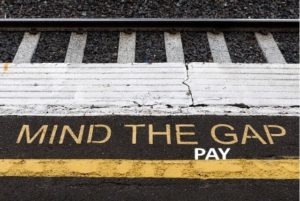The gender wage gap
Lars Syll
The following Avivah Wittenberg-Cox quote and commentary was presented by Lard Syll in a recent blog on the gender wage gap [1]:
“Uber has conducted a study of internal pay differentials between men and women, which they describe as ‘gender blind’ … The study found a 7% pay gap in favour of men. They present their findings as proof that there are issues unrelated to gender that impact driver pay. They quantify the reasons for the gap as follows:
- 20% is due to where people choose to drive (routes/neighbourhoods);
- 30% is due to experience;
- 50% is due to speed, they claim that men drive slightly faster than women, completing more trips per hour.

“The company’s reputation has been affected by its sexist and unprofessional corporate culture, and its continued lack of gender balance won’t help. Nor, I suspect, will its insistence, along with research conducted by its own staff to prove it, that the pay gap is fair. This simply adds insult to obnoxiousness.
“But then, why would we have expected any different? The Uber case study’s conclusions may actually be almost the opposite of what they were trying to prove. Rather than showing that the pay gap is a natural consequence of our gendered differences, they have actually shown that systems designed to insistently ignore differences tend to become normed to the preferences of those who create them.” — Avivah Wittenberg-Cox
While spending a couple of hours going through a JEL survey concerned with modern research on the gender wage gap, I was struck almost immediately by how little that research was accomplish- ed in terms of explaining gender wage discrimination. Notwithstanding all the heavy regression and econometric alchemy used, wage discrimination is somehow more or less conjured away.
Trying to reduce the risk of having established only ‘spurious relations’ when dealing with observational data, statisticians and econometricians standardly add control variables. The hope is that one thereby will be able to make more reliable causal inferences. But if you do not manage to get hold of all potential confounding factors, the model risks producing estimates of the variable of interest that are even worse than models without any control variables at all. Conclusion: think twice before simply including ‘control variables’ in models!
The reality that women are working in occupations often different from those employing men, and have different types of education to men are, among other things, not only the result of ‘free choices’ causing a gender wage gap, but actually to a large degree itself is the consequence of discrimination.
The gender pay gap is a fact that, sad to say, to a non-negligible extent is the result of discrimination. Even though many women are not deliberately discriminated against, but rather ‘self- select’ (sic!) into lower-wage jobs, this in no way magically explains away the discrimination gap. As decades of socialization research has shown, women may be ‘structural’ victims of impersonal social mechanisms that in different ways aggrieve them.
Source: Real World Economic Review blogs, 18 May 2021
1. https://rwer.wordpress.com/2021/05/18/the-gender-wage-gap/



















